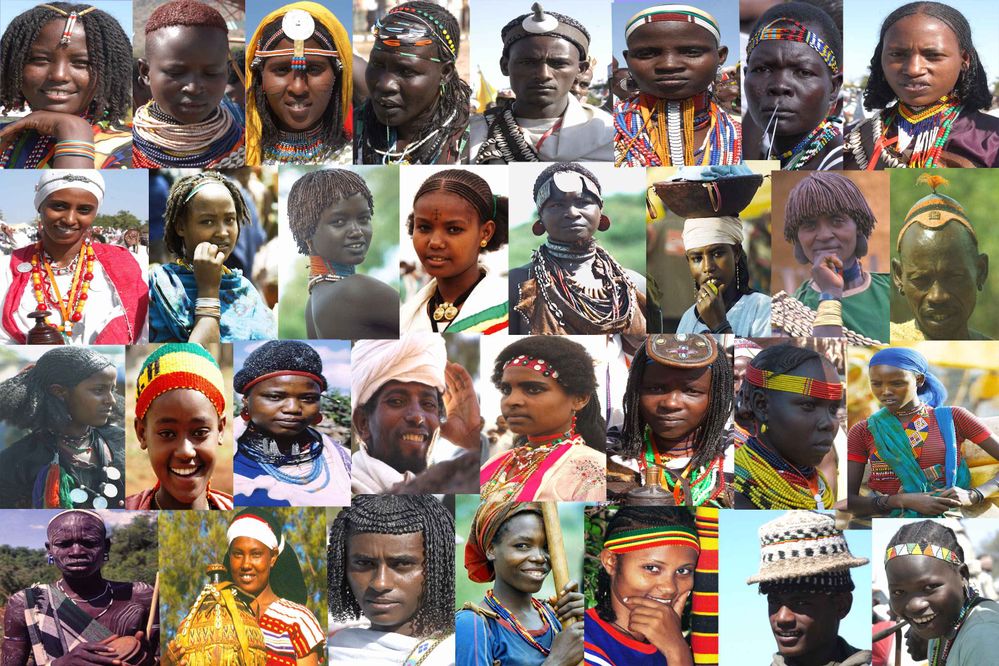
Applying “design thinking” to solve Ethiopia’s complex ethnic and language policy
Applying “design thinking” to solve Ethiopia’s complex ethnic and language policy
What does it mean to promote diversity and have a balanced language policy in Ethiopia? The question hardly has any single, universal answer. Diversity is definitely a standard of excellence in culture and policy making. However, different countries have different recipes for achieving and maintaining this standard. Ethiopia is a country that has numerous language and cultural diversity. With diverse communities living in the country, successive governments struggled to create an atmosphere of “authentic language multiplicity”, which encourages communities to use their language while respecting the country’s official language. The problem is significant and yields no simple solution. “Design thinking” could become an alternative to other policy making strategies, providing Ethiopian authorities with a better understanding of the problem and offering solutions that will make diversity an acceptable standard and re position Ethiopia as a multilingual state.
Ethiopia has a unique position in Africa. Firstly, it did not directly experience European colonization. Secondly, it is also the country where the prevailing majority adheres to an early form of Christianity and Islam. What it means is that the cultural and linguistic landscape in Ethiopia remains mostly untouched by European interference. It is unique and colorful. Ethiopia has managed to retain its linguistic and cultural authenticity across centuries, but as times and conditions change, new policies are needed to balance the competing demands of diverse, multicultural communities. The biggest challenge for Ethiopia is to preserve different languages spoken on its territory with a balance for official language(s). Ethiopia can leverage significant resources to achieve the desired policy goals, and design thinking is just one of them.
Thus, what is design thinking? According to Yeager et al. (2016), design-based approaches are problem-centered approaches, whereby they reconceptualize every problem as a design issue that requires an easy and predictable solution. Design thinking presents a problem as that, which requires a design-based solution. It means looking at the problem from within, understanding its context and impact, and proposing a quick and cost-effective solution. Design thinking can take different forms. For example, user-centered design implies that solutions are proposed from a user’s perspective (Yager et al., 2016). Therefore, anyone eager to offer a solution to a problem will first have to explore and understand it from the perspective of the user. In the context of Ethiopian language policies, it may mean that policymakers will have to put themselves in the shoes of diverse citizens and communities to see the depth and scope of the problem. Such experience will undoubtedly inform their understanding of diversity and language policy. Yager et al. (2016) also mention A/B testing, which is an extension of design thinking –testing the proposed solution. Whether it can work with language policies in Ethiopia is not clear. However, the idea has a good promise to bring conflicting parties together to propose a balanced policy solution and alleviate decade-long language and ethnic tensions in the country.
Design thinking could facilitate the development of adequate ethnic and language policy in Ethiopia. Firstly, it centers on the user and user problems. Design thinking and user-centered philosophies necessitate the use of qualitative research methods. In the given context, it means asking Ethiopians about the language and ethnic issues they face, thus enriching the current policy perspective. Policymakers may need to go an extra mile to clarify the controversies surrounding ethnicity and language in Ethiopia, but it is a worthy experience, as it can provide useful data and guide the development of effective policy solutions.
Secondly, design thinking is always collaborative. According to We Thinq (2017), it aims to engage community members at every point of the process. Design thinking requires extensive communication and listening skills. As such, it creates a fertile ground for initiating and maintaining a dialogue between policymakers and diverse communities in Ethiopia. It also creates an opportunity for engaging important policy and community stakeholders, who can articulate the position of diverse communities and propose solutions that will satisfy all parties.
Thirdly, design thinking, and testing are intricately related. “Because it is easy to be wrong about what will be persuasive to a user, rather than guess, test” (Yeager et al., 2016). After decades of linguistic and ethnic opposition in Ethiopia, the only way for the government to achieve the goals of peace is by testing the appropriateness of various solutions on a small scale and using their results to implement national language and ethnic policies. Overall, design thinking can provide a framework and a plan of action for the government and agencies in Ethiopia to improve the diversity climate and eliminate ethnic and language disagreement that impede its socio-economic and cultural development.
Design thinking is a philosophy and way of thinking. It can help Ethiopian authorities redesign and reconceptualize the language and ethnic policy problems the country is currently facing. By focusing on users and engaging multiple stakeholders in the process, Ethiopia can propose relevant policy initiatives. They can be pilot tested on a small scale, providing an impetus for implementing effective policies nationwide.
Ed.’s Note: Samuel Alemu, Esq is a partner at the ILBSG, LLP. His partner at the ILBSG, LLP, Praveen C. Medikundam, Esq contributed to this article. They are both admitted to the bar associations of New York State, United States Tax Court, and the United States Court of International Trade. Samuel can be reached at [email protected]. Samuel’s twitter handle is @salemu.
Contributed by Samuel Alemu
Note: released first on Reporter English
